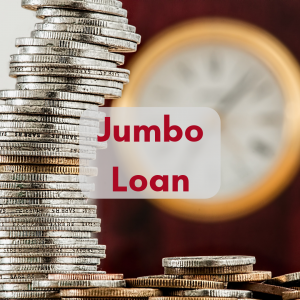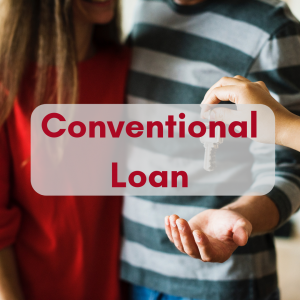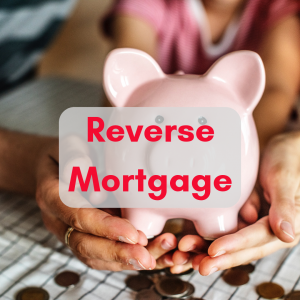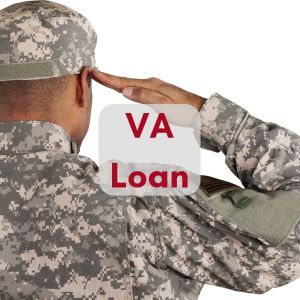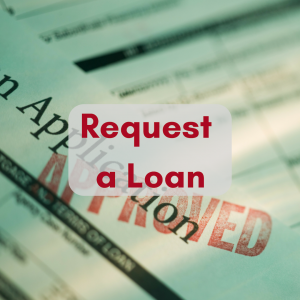Description
Getting a Renovation Mortgage
Today’s mortgage programs let buyers purchase and rehab a home with one loan. This is great news for home buyers who want to save money and earn instant equity with a “fixer upper” home.
Both FHA’s 203(k) Renovation Mortgage and Fannie Mae’s HomeStyle allow you to borrower based on the improved value of the property. That means a higher loan amount to cover any renovation costs so you pay less out-of-pocket. At today’s interest rates for personal loans, it is about the cheapest way to fund a major home repair.
Whether you choose the FHA or Fannie Mae program they are “one-time-close” mortgages. This means you apply for a single loan, with one set of documents and closing costs. Some other renovation loan programs require a construction loan upfront, and a refinance later, but not either of these loans.
But how do you decide between these two programs? Contact your Loan Officer to determine the best course of action and which program is a better fit for you.
To help you better understand your options, below are the brief explanations as to the differences between the two options.
FHA 203k
Getting a Mortgage Loan for a Fixer-Upper: A Primer on FHA 203k Loans
The idea of buying a fixer-upper and turning it into your dream abode can seem so perfect — every nook and cranny just to your specifications! The reality, however, can be harsh. When you realize how much it will cost to remodel, you often also realize that you can’t afford it. Or you find out that a lender won’t give you a loan because the home is considered “uninhabitable” as it is. That’s where an FHA 203k loan comes in.
An FHA 203k loan is a loan backed by the federal government and given to buyers who want to buy a damaged or older home and do repairs on it. Here’s how it works: Let’s say you want to buy a home that needs a brand-new bathroom and kitchen. An FHA 203k lender would then give you the money to buy (or refinance) the house plus the money to do the necessary renovations to the kitchen and bathroom.
Often the loan will also include: 1) an up to 20 percent “contingency reserve” so that you will have the funds to complete the remodel in the event it ends up costing more than the estimates suggested and/or 2) a provision that gives you up to about six months of mortgage payments so you can live elsewhere while you’re remodeling, but still pay the mortgage payments on the
Which Repairs Qualify?
There are two main types of FHA 203k mortgage loans. The first is the regular or standard 203k, which is given for properties that need things like structural repairs, remodeling, a new garage, or landscaping; the second is the streamlined or limited 203k, which is given for energy conservation improvements, new roofing, new appliances, or non-structural repairs such as painting.
Among the other repairs that an FHA 203k will cover:
- decks
- patios
- bathroom and kitchen remodels
- flooring,
- plumbing
- new siding
- additions to the home such as a second story
- heating and air conditioning systems
- And more
The program will not cover so-called “luxury” improvements such as adding a tennis court or pool to the property. It also does not cover any improvement that does not become a permanent part of the property.
How Much Money Can You Get?
The maximum amount of money a lender will give you under an FHA 203k depends on the type of loan you get (regular vs. streamlined and purchase vs. refinance loan).
With a regular FHA 203k, the minimum amount you can borrow is $5,000.
With a regular FHA 203k loan, the maximum amount you can get on a purchase loan is the lesser of these two amounts:
- The Nationwide FHA Mortgage Limits
OR
- The appropriate Loan-to-Value (LTV) ratio from the Purchase Loan-to-Value Limits, multiplied by the lesser of:
- 110 percent of the After Improved Value (100 percent for condominiums), or
- the Adjusted As-Is Value, plus the following:
- Financeable Repair and Improvement Costs, for Standard 203(k) or Limited 203(k);
- Financeable Mortgage Fees, for Standard 203(k) or Limited 203(k);
- Financeable Contingency Reserves, for Standard 203(k) or Limited 203(k); and
- Financeable Mortgage Payment Reserves, for Standard 203(k) only.
Refinance limits are similar but also take into account the amount of the existing debt and fees of the existing loan.
With a streamlined loan, you can get a loan for the purchase price of the home plus up to $35,000 with no minimum repair cost plus the cost for energy improvements. To determine the as-is value of the property or the estimated value of the property post-repair, you may need to have an appraisal done. You will be required to put down 3.5 percent, but the money can come from a family member, employer or charitable organization.
What Kinds of Properties Qualify?
Qualifying homes for a FHA 203k loan include:
- A one- to four-family home that has been completed for a least a year
- A home that has been torn down, provided that some of the existing foundation is still in place
- A home that you want to move to a new location
- The home cannot be a co-op, but some condos are eligible
Your property will also have to qualify under the usual FHA requirements. For example, its value cannot exceed a certain maximum amount, which depends on where you live.
What Are the Pros and Cons of These Loans?
The main benefit of these loans is that they give you the ability to buy a home in need of repairs that you might not otherwise have been able to afford to buy. Plus, the down payment requirements are minimal, and often you get decent interest rates (note that the interest rates and discount points will vary by 203k lender, so it’s important to make sure that you’re getting a good deal on the loan).
The downsides are that not all properties qualify, there are limits on the funding you can get and applying for the loan isn’t easy. For example, to apply for the loan you may need to hire an independent consultant to prepare the exhibits required (to get the loan, you have to provide a detailed proposal of the work you want to do and cost estimates for each item).
FANNIE MAE HOMESTYLE
Guide to HomeStyle Renovation Mortgage
It can be exhausting finding a suitable home for sale that combines must-have and comfort features that will hold up long enough for the mortgage to close. Disrepair, energy inefficiency, and questionable code compliance can take a home with a great location and affordable price right out of the mix. Seniors and their children also may have trouble finding a suitable home where they can age in place without having to make costly renovations.
As the housing stock dwindles, consumers may wish to consider a HomeStyle Renovation (HSR) mortgage from Fannie Mae that includes the cost of necessary upgrades and improvements in the loan package. A single mortgage can add up to lower closing costs – and lower rates. Previously, consumers had to turn to second mortgages and home equity borrowing to pay for energy upgrades or repairs after they had already bought the home with a first loan.
Inside the HomeStyle Renovation Mortgage
Eligible properties include:
Principal residences, one to four units
One-unit second homes
Single-unit investment properties (co-ops, condos)
Manufactured or mobile homes are not eligible.
Types of renovations mortgages include:
15- and 30-year fixed-rate mortgages
Adjustable-rate mortgages
Note from Fannie Mae: “The original principal amount of the mortgage may not exceed Fannie Mae’s maximum allowable mortgage amount for a conventional first mortgage.”
Qualifying and down payment requirements:
In general, there is no minimum down payment stipulation on these Fannie Mae purchase loans. HomeStyle mortgage lenders use a combination of factors including home equity and credit to assess the cost of the loan. To get a rough estimate, combine the estimated cost of the purchase and renovation loans and divide by the total value of the property.
Unlike other loan products, HomeStyle mortgages are based on the “as completed” value after the renovations and upgrades have been made. Using improved values based on documented plans from approved contractors, HomeStyle lenders can ensure that the mortgage covers the renovations. Moreover, funds for the improvements won’t be released for homeowners/contractors until the work is certified complete by an inspection. There is no loan credit for sweat equity!
Depending on financial circumstances, borrowers can qualify for combined loan-to-value ratio (CLTV) of up to 105 percent with subordinate financing and avoid a down payment entirely. The Community Seconds® mortgage is the subordinate financing program of choice for Fannie Mae lenders.
Down payments can vary by lender and by the applicant’s credit worthiness. That’s why it makes sound advice to compare current rates on mortgages at LendingTree. Currently, applicants for a HomeStyle mortgage on owner-occupied, single-unit homes find down payments around 5 percent on a fixed-rate loan and 10 percent on ARMs.
When it comes to renovations, the HomeStyle mortgage offers a generous range of costs for inclusion in the loan including:
Architects/designer expenses
Energy efficiency assessments
Engineering and design updates
Required inspections
Permit fees
All renovations performed under a HomeStyle mortgage must be done by lender-approved professionals. Contractors and architects with professional licenses and credentials can prepare the necessary drawings and plans prior to the loan. This assists underwriters in their determination of completed value as well as whether the proposed improvements are cost effective.
Once the loan closes, the work must begin apace. A lender’s appraiser will inspect all work and submit a completion certificate to Fannie Mae before funds can be paid to the contractors/designers. Renovations must be completed within six months after closing.
Energy improvements up to 50 percent of the “completed” appraised value of the home can also be financed though the HomeStyle loan, but upgrades must all be satisfactorily completed within 100 days of closing. Any budgeted improvement funds left over after the renovations are done can be paid into the principal.
What to do while the work is underway:
Because the HomeStyle mortgage applies to “owner-occupied” homes, you’ll have to live in and around the upgrades. Those who must relocate while the work is underway can arrange to have an escrow account established by their lender to pay for homeowner’s insurance and property taxes without disruptions.

